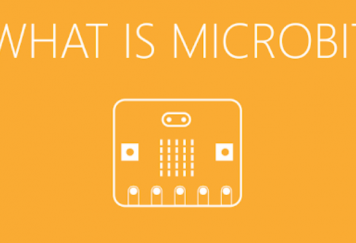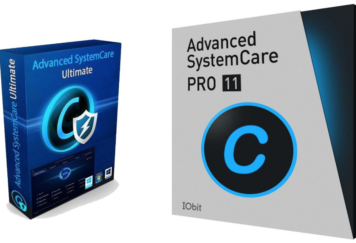Given the rapid pace of technological innovation, the tools for creative expression are no longer the sole domain of highly skilled developers and designers. The democratization of the digital space is sweeping across industries, carving out new avenues for expression and interaction. Augmented Reality (AR) stands at the frontier of this evolution, promising to blend the virtual and physical worlds in ways previously envisioned only in sci-fi novels. In this deep dive, we’ll unravel the potential of ‘No-Code’ Augmented Reality, a gateway for digital creators into this groundbreaking technology.
What is No-Code AR, and Why Does It Matter?
Traditionally, developing Augmented Reality experiences required a high level of technical expertise in fields like computer vision, 3D design, and mobile app development. This high barrier to entry limited the potential for creating AR content for a small subset of individuals and organizations. However, with the advent of ‘No-Code’ platforms, the complexities of AR development are abstracted, allowing creators with minimal technical skills to build compelling AR experiences.
The impact of this shift cannot be overstated. No-code AR platforms are to ordinary individuals what the printing press was to writers: the power to speak a new language, one that is visual, interactive, and incredibly personal. They democratize innovation, giving creative minds the canvas to explore and the stage on which to perform without the constraints of coding.
The Foundations: Understanding AR Technology
Before creating AR, it’s essential to grasp the technology behind it. Augmented Reality overlays digital information—images, videos, 3D models—onto our real-world view. It is usually achieved through a camera feed on smartphones or AR glasses. AR technology relies on spatial recognition, ensuring digital elements appear anchored in physical space.
Understanding spatial recognition is crucial in creating AR experiences that ‘make sense’ visually and functionally. No-Code Augmented Reality platforms employ various techniques to handle this, such as marker tracking (using visual cues as markers for AR interaction), image recognition (matching predefined images), and surface detection (placing AR objects on real-world planes like floors or tables).
No-Code AR Platforms: A Tour of the Market Leaders
Several platforms have emerged, each with its approach to bringing No-Code AR to the masses. Let’s take a look at some of the market leaders:
ZapWorks
ZapWorks offers an intuitive drag-and-drop editor paired with powerful scripting abilities, making it a favorite for designers with a burgeoning interest in AR creation. It supports a variety of experiences, from spatially-aware animations to complex interactive games.
Lens Studio
Developed by Snap Inc., Lens Studio provides a framework for creating Snapchat AR filters. It’s an excellent starting point for creating social media-centric AR experiences that can potentially reach millions of users.
Spark AR Studio
From Facebook’s stable, Spark AR Studio allows users to create AR effects for Facebook and Instagram. With a growing community and extensive documentation, Spark AR Studio is a prime choice for creators looking to integrate AR into their social media strategy.
8th Wall
8th Wall focuses on web-based AR, allowing companies and creatives to deploy AR experiences directly into web browsers. With its WebAR Editor, it’s straightforward to create experiences that can be accessed from any device with a browser and a camera.
Getting Started with No-Code AR
The prospect of diving into AR creation can be daunting, but with the right approach, it’s a highly accessible endeavor. Let’s break down the steps to kickstart your No-Code AR journey:
Step 1: Acquaint Yourself with the Platform
Begin by exploring the platform’s interface and available tutorials. Understanding the tools at your disposal is fundamental to the creative process. Most No-Code AR platforms offer an array of sample projects that you can dissect to learn how they were constructed.
Step 2: Start Simple
Your first foray into AR should focus on simplicity. Experiment with placing basic shapes or text in AR space. Familiarize yourself with the nuances of positioning and scaling objects in three dimensions.
Step 3: Experiment with Interactivity
The allure of AR lies in its interactivity. Play around with simple triggers that cause AR objects to behave in response to user actions, whether that’s a tap, a swipe, or the device’s proximity to an object.
Step 4: Test, Optimize, Iterate
As you build your AR experience, it’s crucial to test it on various devices. Understand that what looks and feels right on your development device may not translate universally. Optimize your creations for a broad range of specifications and iterate based on testing feedback.
Step 5: Community Engagement
Engage with the platform’s community to seek inspiration and solutions to any hurdles you may encounter. Sharing your work and participating in the discourse can be not only enlightening but rewarding as well.
Case Studies: Real-World Applications of No-Code AR
No-Code AR isn’t just a tool for hobbyists; it’s making a tangible impact in various sectors. Let’s explore how creators are leveraging No-Code AR to innovate:
Education and Training
From interactive textbooks that bring history to life, to on-site training modules for specialized fields, No-Code AR is redefining education. The ability to present complex information in a visually engaging and interactive format is invaluable.
Marketing and Sales
No-Code AR allows brands to offer immersive product experiences, increasing customer engagement and understanding. AR-powered try-on features and interactive product demonstrations are becoming commonplace in digital marketing strategies.
Art and Entertainment
Artists are using No-Code AR to create thought-provoking installations and experiences that blur the line between art and audience. This technology also aids in the creation of AR-enhanced books and other narrative forms.
Overcoming Challenges in No-Code AR
Despite its accessibility, No-Code AR creation isn’t without its challenges. Here’s how to navigate common stumbling blocks:
Managing Expectations
No-code AR can be powerful but is not a replacement for skilled development. Understanding the platform’s limitations and managing expectations is crucial for a successful project.
Performance Optimization
Optimizing AR experiences for performance is an evolving art. Balancing visual fidelity with responsiveness is particularly tricky. Regularly updating and refining your AR content is essential as both the technology and your skill set improve.
Legal and Ethical Considerations
When creating AR content that interacts with the real world, it’s important to consider legal and ethical implications. These include permissions for content use and respect for privacy boundaries.
No-Code AR: The Gateway to a New Creative Horizon
No-code AR platforms have empowered creators worldwide with a powerful way of creating AR solutions. By removing the coding barrier, these platforms have opened the floodgates to a new wave of experiential content that pushes the boundaries of storytelling and engagement.
With No-Code AR platforms like PlugXR, you are not just a spectator in the ongoing digital revolution but a participant, a creator, and perhaps even a pioneer.
As you embark on your No-Code AR journey, remember that the technology is just the beginning. The true magic of AR lies in your ideas and the stories you choose to tell. Embrace the learning curve, stay creative, and enjoy the process of bringing your AR visions to life.
Follow TechStrange for more!





